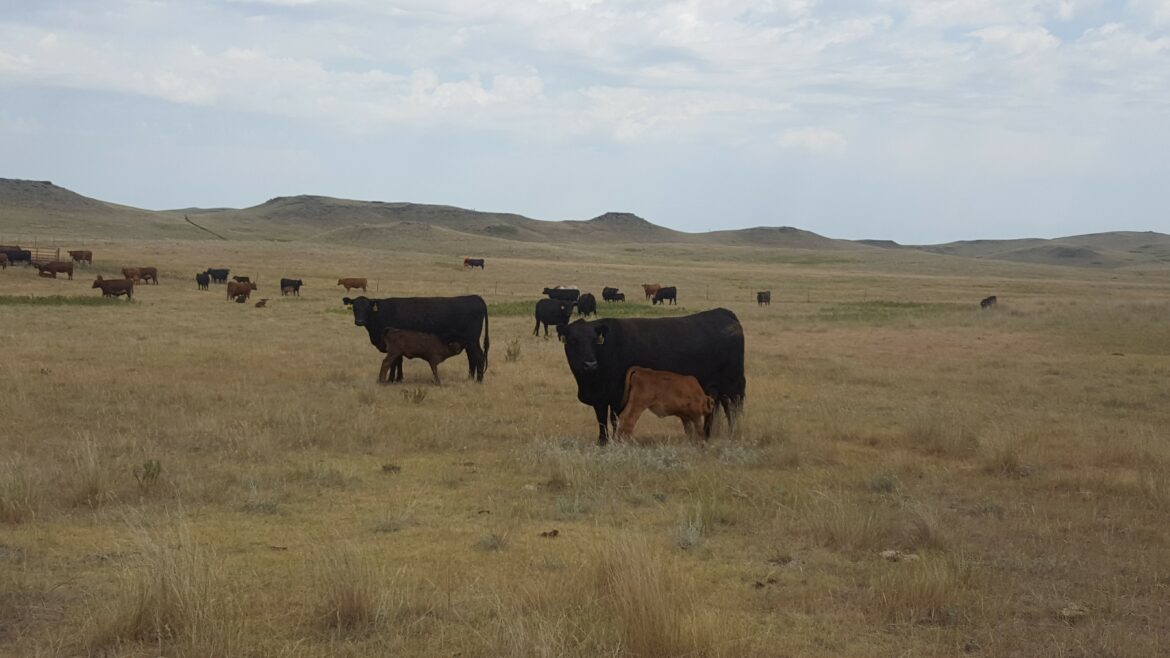Weather forecasts predict worsening drought conditions in the northern Great Plains for the 2021 growing season, which is bad news for cattle producers.
Many cattle operations will find themselves without enough forage and feedstuffs to maintain their current herd size.
“Unfortunately, often decisions are made more with emotion than logic during stressful times,” says Lisa Pederson, Extension livestock specialist at North Dakota State University’s Central Grasslands Research Extension Center near Streeter.
Producers have several strategies to manage herds with limited feed resources, including developing a culling plan.
“Operations that are more resilient to drought generally have a strong, well-developed culling strategy in place,” Pederson notes.
Culling parameters should remove cattle that do not help the farm or ranch meet its goals. A good question to ask before developing a culling plan is: “What are my goals, and what culling criteria will help my operation and cattle achieve them?” Every operation has different goals.
“You cannot manage what you do not measure,” Pederson says. “Keeping records of traits your operation identifies are important is key to developing a strategic culling plan.”
Here are some traits to consider when deciding which cattle to cull:
- Ornery cattle: Cattle with poor dispositions can be dangerous to humans, other cattle and other livestock. They can damage equipment and facilities, and they are less productive and profitable in the feed yard and on the rail.
- Open and/or dry cows: Cows that are open and/or dry (without a calf at their side) are animals that are on a free ride. They are eating limited resources without having a calf to produce income. Unless the operation has really great reasons to keep an open or dry cow, these should be near the top of the cull list.
- Old cows: Old cows that are less productive, thin or lame and have poor teeth are those that will have a tough time rebreeding and maintaining condition through the breeding season. Their calves also may be poorer performers at weaning time.
- Thin cows: The fact that cows with a body condition score of at least 5 at calving are more likely to breed back in an established breeding season is well documented.
“Cows that are thin will take greater nutritional resources to cycle and breed back,” says Janna Block, Extension livestock systems specialist at NDSU’s Hettinger Research Extension Center. “During times of forage shortages, these cows may not regain condition adequate enough to rebreed.”
- Cows that calve later in the calving season: Later-calving cows typically have lighter calves at weaning and are more likely to be open when exposed during an established breeding season because they have to return to estrous and be bred quite quickly after calving.
- Cattle with udders that don’t meet the operation’s standards: Cows with poorer udder quality often cause more labor at calving time to get a calf to suck. They may have calves that have not received enough colostrum, which can affect calf health and survival. In addition, low-hanging udders can more easily transfer scours-causing pathogens to suckling calves. Calving time provides a nice opportunity to score cows’ udders and note those scores in the calving records.
- Cattle with structure and feet that don’t meet the operation’s standards: Cattle with poorer structure typically have more lameness issues. They are less productive and may not be able to travel longer distances for feed and water. Additionally, some feet issues are genetic in nature, including vertical cracks and corkscrew claw. Note feet and leg concerns at calving in the calving records.
- Poor performers and producers: Cows that continually have been poor producers when compared with their herd mates are typically less profitable. Producers should evaluate the last three years of records if possible.
- Fence crawlers: In times of increased management, the additional time spent on cattle that are often out is time that might be needed for others tasks, such as hauling water or feeding harvested forages.
- Additional negative traits: This group includes cows that don’t like to claim their calves at calving or maul their calves, and other animals that don’t meet the operation’s goals and criteria.
“Once culling criteria has been established, go through your records and make a list of your easier culls,” Pederson advises. “These cattle should be among the first to exit the herd. As culling needs arise, continue down the list. Your herd can improve in terms of traits that meet your goals with a strategic culling plan in place.”
NDSU Extension livestock marketing economist Tim Petry offers this advice for when the time comes to market cattle: “It is very important to contact your auction market as early as possible when the decision to market cattle has been made. The market can give tips on appropriate sorting and what information they need to adequately merchandise the cattle. Some hold special sales and like to know what cattle will be available so they can advertise them.”
Gerald Stokka, NDSU Extension veterinarian recommends producers not forget bulls when making culling decisions.
“If bulls do not pass a breeding soundness exam or do not meet your operation’s criteria, add them to the cull list,” he says. “But if cattle cannot stand and walk on all four feet and legs, are in a body condition score less than 3 and/or do not meet animal health product withdrawal times, do not market them until they meet those parameters.”
###
NDSU Extension


